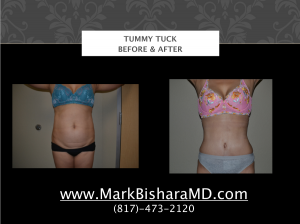
Body contouring is a general term that refers to any surgical procedure that alters the shape of different areas of the body. Body contouring after massive weight loss refers to a series of procedures that eliminate and/or reduce excess skin and fat that remains after previously obese individuals have lost a significant amount of weight, in a variety of places including the torso, upper arms, chest, and thighs.
Obesity is in epidemic proportions in the US and many parts of the world. It is defined as a condition where a person’s body mass index (BMI) is 30 or greater. BMI is calculated by dividing the patient’s weight in kilograms by their height in meters, squared. Normal weight individuals have a BMI that ranges from 18 to 25. Overweight people have a BMI from 26 to 30, with 30 and above people considered obese. Once the BMI reaches 35 and above, patients are considered morbidly obese. From a BMI of 30 and above a person’s life span is shortened. In addition, obesity negatively affects the economic health of a society as well as other aspects of adult and child health, often for life. Childhood obesity is on the rise in Europe as well.
The Facts About Body-Contouring Surgery
When you lose 100 pounds or more, what happens to the extra skin? For many, the answer lies in body-contouring surgery.
Body Contouring: Is It For You? continued…
Short of surgery, there is really nothing that can help. Exercise won’t tighten it, and skin creams and lotions won’t do a thing to help.
7 Things to Do Before Having Surgery
If you are considering body-contouring surgery, here’s what you should do before surgery:
- Stabilize your weight — at your goal — for at least three months, and be sure to correct all nutritional deficiencies (which are common after weight loss surgery).
- Establish a reliable support network of family and friends to help you during recovery.
- Make sure you can get enough time off from work to recover. It will take 4-6 weeks depending on the procedure.
- Understand that everything is a trade-off between removing skin, getting a contour, and having a scar. Scars are permanent. They do get lighter, but don’t disappear over time.
- Prioritize your body according to the area that bothers you the most, and concentrate your surgery there first. You may find you don’t need additional procedures.
- Prior to surgery, stop smoking (to reduce complications) and increase your protein intake to 50 to 70 grams per day to speed healing.
- Choose a surgeon who is board-certified in plastic and reconstructive surgery — not just a board-certified doctor.
At the office of Dr. Mark Bishara and The Paragon Plastic Surgery & Med Spa our treatment plan is specifically designed for patients who have recently undergone bariatric surgery and are left with loose, sagging skin as a result of the extreme weight loss. Cosmetic surgery after massive weight loss includes procedures such as facelift and neck lift, breast lift, abdominoplasty, arm lift, thigh lift, body lift, and abdominal hernia repair. Please contact our office to ask more about body contouring procedures at (817) 473-2120 or visit our website at www.MarkBisharaMD.com.













.jpg)




